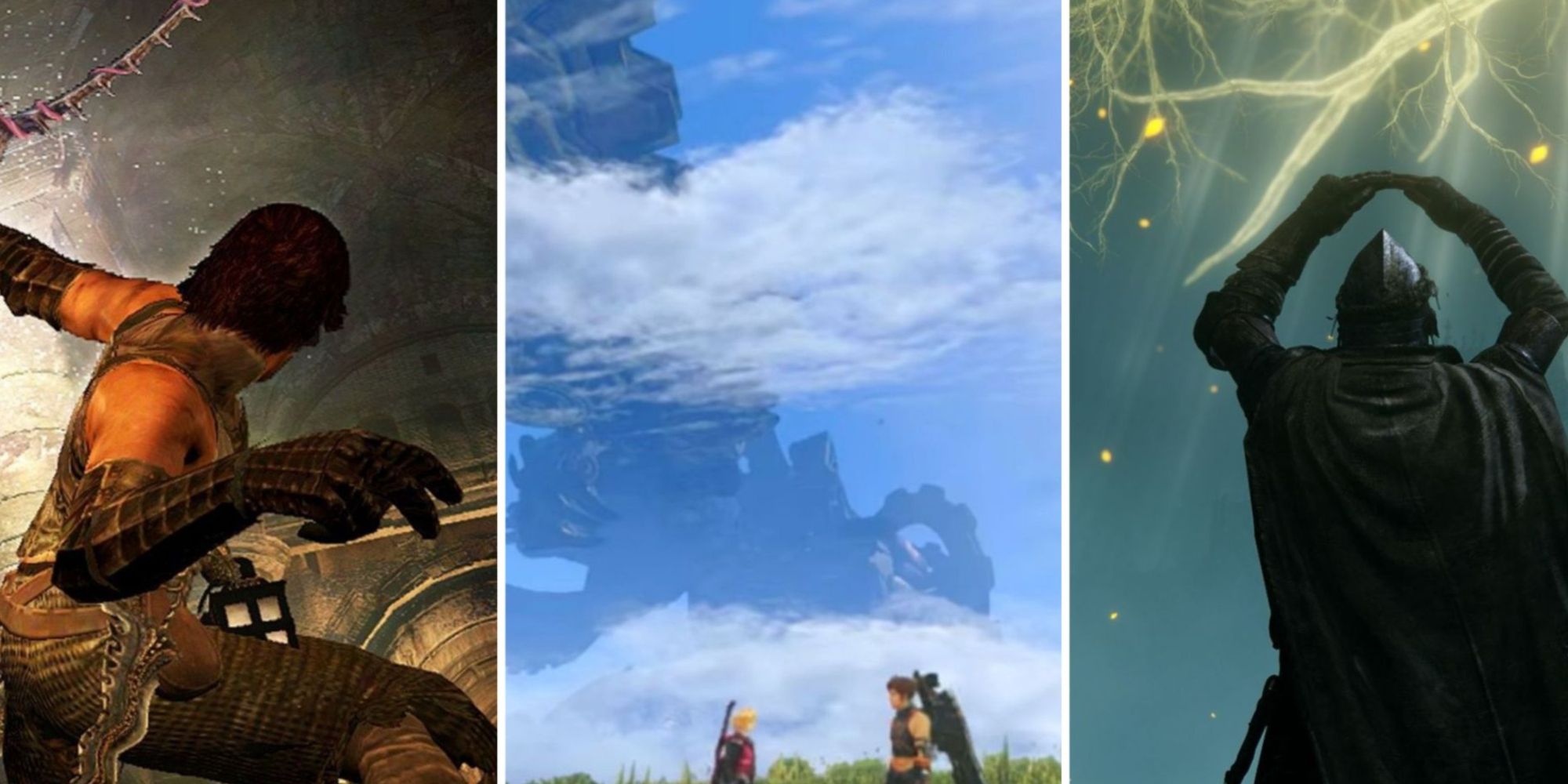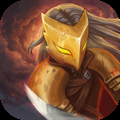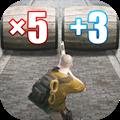
'Open-world' is almost a cursed word now. Seemingly every other new AAA game ends up being open-world in some variety, rarely really taking advantage of the scale and forms of gameplay that it presents. In more modern Japanese games, however, open-world games are exceedingly rare.
RELATED: The Best Standalone JRPGs
Though old JRPGs are some of the predecessors of open worlds, presenting you a full map that you explore across, that became a much harder endeavour once games transitioned to 3D. That said, there's more than a handful that still attempts it in their own way.
Updated March 3, 2023 by Hilton Webster: Open-world games are showing no sign of slowing down in popularity, but at least they're starting to get a bit more varied. With the likes of Elden Ring skyrocketing in popularity and Dragon's Dogma getting a sequel, open-world games seem set to become much more common from Japanese developers.
10 Octopath Traveler
The series that created Square Enix's glorious HD-2D artstyle and incredibly literal naming conventions, Octopath Traveler is both something incredibly familiar, yet also breaking new ground. While its art is undeniably its greatest asset, it takes many of the old JRPG aspects of open worlds in a more modern context.
In this regard, it's not one seamless open world but a series of connected zones. Due to the game's nature of having eight protagonists, however, you can fully explore the world at your own pace. Each character even has their own unique abilities in the world, prompting you to explore old areas with new characters.
9 Shin Megami Tensei 5
Though Persona may have usurped it in popularity, Shin Megami Tensei is one of Atlus' first series and a pioneer in dungeon crawlers. Shin Megami Tensei 5 served as a return to the series after a long delay and showed there were plenty of new ideas for games to explore.
RELATED: The Longest JRPGs Of All Time
One of those ideas happens to be a semi-open world, a dramatic departure from the dungeon-based exploration of previous entries. Having a world that is much less linear that offers some freedom in how you approach enemies and explore areas offers a massive shift in how the game is experienced compared to previous entries.
8 Ni No Kuni 2
Ni no Kuni 2 didn't get the reception Level-5 was hoping for, with confusing DLC plans and a general lack of communication giving the game a hard life post-release. It's sad too, because the game has some genuinely unique elements to it, bringing a somewhat open-world nature to a city-builder.
Ni no Kuni 2 has you playing as the young king Evan Pettiwhisker Tildrum as you set out to create a new kingdom after your own was usurped from you. Similar to older JRPGs, the open world functions as an overworld, though designed more to scale, making it feel like much more of an adventure.
7 Ys 9: Monstrum Nox
Ys is one of the oldest JRPG series out there, though to this day has never quite gotten the same mass appeal as other series like Final Fantasy and Dragon Quest. Also, unlike others, it's always been more of an action RPG, focusing on flashy combat over turn-based tactics.
Monstrum Nox is unique in the series, taking place almost exclusively in the city of Balduq. Each character has unique traversal mechanics, with the city hiding many little secrets for those willing to go out of its way. It opens up even more as the game goes on and you unlock more skills.
6 Dragon Quest 8
One of Square Enix's biggest series, Dragon Quest had something of a middling reputation in the west until DQ11 skyrocketed it into being one of its most beloved games worldwide. It retains turn-based combat to this day, and Akira Toriyama's art is timeless. Though when it comes to major changes to the series, Dragon Quest 8 was special.
RELATED: Things Dragon Quest Still Does Better Than Other RPGs
Released in Japan in 2004, DQ8 was the first in the series to be fully 3D. Like many other JRPGs, it featured both an overworld and separately loaded settlements. Unlike others, though, was that the overworld was also to scale, making the journey across it truly feel like a grand journey rather than a quick stroll.
5 Final Fantasy 15
Easily Square Enix's biggest and most beloved series worldwide, Final Fantasy is the basis for so many systems in games the world over and is still relied on for inspiration. Being one of the oldest JRPGs, it started with overworlds and towns, the earliest form of an open world though has attempted it in various forms since.
A controversial choice for the best execution of that is Final Fantasy 15. There are technically better entries for how they handle it, but FF15 handles it in a unique way. It's less about the world itself, but the journey through it. The scale feels most impressive when you see the sunset over the horizon and your buddies chat while you leisurely make your way to a motel for the night.
4 Yakuza 7
Many people in the past made the point of calling the Yakuza series a Japanese GTA, but the similarities stop at them both simulating cities on a large scale. Yakuza is so heavily character-focused. Not just the important ones, but each and every person who makes the city feel alive, from the sad to the zany.
RELATED: Best Characters In Yakuza: Like A Dragon, Ranked
The Yakuza games have always been open-world in their dense cities, but not JRPGs. Until Yakuza 7, of course. Shifting into a turn-based game with a literal jobs system, it's heavily inspired by Dragon Quest. As in, Ichiban is literally a Dragon Quest fan that views himself like the various heroes those games feature. It's kinda sweet and incredibly self-indulgent in a way only Yakuza could achieve.
3 Dragon's Dogma
There's never enough praise that can be put on Dragon's Dogma. It's so special, taking the blood of Devil May Cry into an open-world JRPG while taking heavy inspiration from western RPGs like Oblivion. It's such an incredible combo that has made a game unlike anything else. What other game lets you make a perfect replica of any item you want, even the limited fast-travel crystals?
Dragon's Dogma's open world isn't all that big, but it's dense. Every monster feels unique, every NPC has something to say, and every location feels special. Travelling this world with your own DnD party of pawns that comment on the world around you and learn as you do feels so rewarding and makes the world feel so alive.
2 Xenoblade Chronicles
The Xenoblade Chronicles series is an interesting one to classify because it's not strictly open-world. Its areas are massive, but they're still zones. Thing is, they're so gigantic they could almost serve as the size of any other game's open world in the first place, so it feels like fair game. Every area feels like it reasonably connects, and you can even see some other areas way off in the distance, even if they're not part of the current zone.
RELATED: The Hardest Enemies In Xenoblade Chronicles
Monolith Soft has a talent for creating open worlds, even helping create Breath of the Wild's. They excel in excess, creating a world that seems so unreasonably large and yet also is truly fully explorable. Coupled with hilariously overpowered enemies in early areas and an engaging combat system, Xenoblade Chronicles is a real gem.
1 Elden Ring
FromSoftware has been making these Souls games for quite a while now, you might have heard of them. Intricate levels that twist around on themselves, great variety of builds, and incredibly challenging combat. And then there's this little game called Elden Ring that's taken the world by storm.
Elden Ring presented something new to the Souls formula. That enemy that seemed too hard? You can just skip them for now, make your build a bit more flexible. On top of the extra freedom in combat, there's the literal freedom to explore its truly massive and gorgeous open world with nothing but glimmers of gold and an explorer's heart to guide you.
NEXT: The Most Relaxing JRPGs













